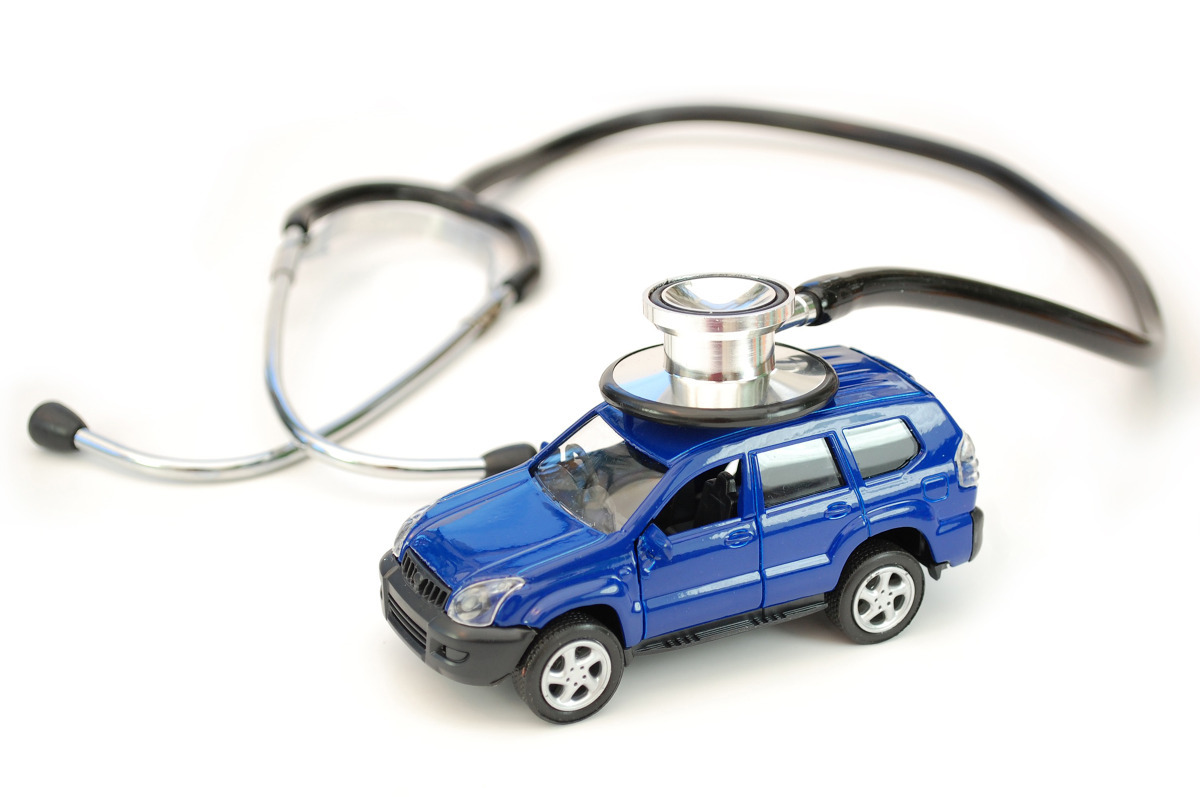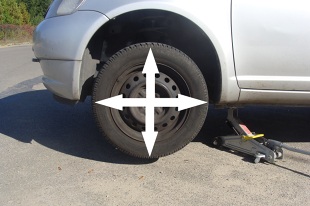
Become your car's diagnostician (part 2)
 In the next issue without car diagnostics, we'll find out what lies behind some of the symptoms we may experience while driving, how undercarriage imperfections can leave their mark on tires, and how easy it is to spot unnecessary play.
In the next issue without car diagnostics, we'll find out what lies behind some of the symptoms we may experience while driving, how undercarriage imperfections can leave their mark on tires, and how easy it is to spot unnecessary play.
Suspicious clutch
Clutch slip (an increase in engine speed is not accompanied by a proportional increase in vehicle speed, especially when shifting into high gears) - this phenomenon is caused by insufficient pressure of the friction surfaces in the clutch or their reduced coefficient of friction, and the causes may be: deformed or jammed clutch controls (for example, a cable), damaged automatic clutch travel adjuster, excessive wear of the spline connection between the clutch disc and the gearbox input shaft gears gears, excessive or complete wear of the friction linings of the clutch disc, oiling of the friction surfaces of the clutch due to damage to the crankshaft rear oil seal or the gearbox output shaft oil seal.
Clutch does not disengage completely, which is usually manifested by difficult gear shifting - The list of possible causes includes, among others, a malfunction of the external clutch control mechanism, excessive wear or deformation of the central spring segments, sticking of the release bearing on the guide, damage to the release bearing, sticking of the end of the gearbox input shaft at its bearing, i.e. in the neck of the crankshaft. It is also worth knowing that difficulties when shifting gears can also be caused by damaged synchronizers, unsuitable and too viscous oil in the gearbox, and also due to high idle speeds.
Local increased resistance when the clutch is engaged - indicates damage to the internal elements of the control mechanism, such as the release bearing with the guide, the ends of the central spring segments, the connection of the bearing housing with the release fork.
Jerking when releasing the clutch pedal - in this system, this can be caused by jamming of the elements of the internal control mechanism or oiling of the friction linings. Such jerks will also be the result of damage to the drive cushions.
Noise occurs when pressing the clutch pedal - this is a sign of wear or even damage to the release bearing  consisting in the capture of its movable element interacting with the ends of the central spring.
consisting in the capture of its movable element interacting with the ends of the central spring.
Audible noise at idle, stationary, out of gear - in this case, the prime suspect is usually the torsional vibration damper in the clutch disc.
Rough driving
The car does not keep the direction of movement - this can be caused, for example, by uneven tire pressure, incorrect wheel geometry, excessive play in the steering gear, play in the steering gear joints, incorrect operation of the stabilizer, damage to the suspension element.
Car pulls to one side – among the reasons that may be the cause of this, e.g. different tire pressures, incorrect alignment, weakening of one of the front suspension springs, blocking of the brakes of one of the wheels.
Vibration is felt in the steering wheel while driving. - this phenomenon is most often caused by an imbalance in the steered wheels of the car. A similar symptom will accompany the twisting of the disk of one or both front wheels and excessive play in the steering nodes.
Steering wheel vibration when braking - in the vast majority of cases, this is caused by excessive runout or warping of the brake discs.
Tire tracks
The middle part of the tread is worn - this is the result of prolonged use of over-inflated tires.
Side tread pieces wear out at the same time - this, in turn, is the result of driving with under-inflated tires. A rather rare case, because it is impossible not to notice such a low pressure, unless the driver pays attention to it at all.
Cake-shaped signs of wear all around – so worn out shock absorbers can affect the tires of the car.
One-sided worn side of the tread - the reason for this appearance lies in the wrong wheel alignment (geometry).
Local tread wear – this can be caused, among other things, by wheel imbalance or so-called braking, i.e. wheel locking during heavy braking. In the case of drum brakes, a similar symptom will be accompanied by opalescence of the brake drum.
Free on wheels
They are pretty easy to spot. Just jack up the car and then do a simple control test. We take the wheel with our hands and try to move it. In the case of steerable wheels, we do this in two planes: horizontal and vertical. A noticeable play in both planes can most likely be attributed to a worn hub bearing. On the other hand, play that occurs only in the horizontal plane of the steering wheels is usually caused by a faulty connection in the steering system (very often it is play at the end of the tie rod).
When testing the rear wheels, we can only check play in one plane. Its presence most often indicates an incorrect wheel bearing. In this case, it is worth making another test, which consists in turning the test wheel firmly. If this is accompanied by a distinct buzzing sound, this is a sign that the bearing is ready for replacement.
See also the first part of the guide “Become your car diagnostician”